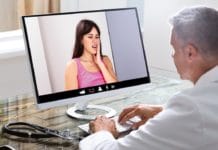I am a “self-proclaimed” perfectionist. I need to know I am doing the best job I can while striving to do it better. Sound familiar? A little like most hygienists you know?
If you had asked me ten years ago that I would knowingly leave stain on people’s teeth, I would have laughed. Knowing this may have caused me to lose sleep at night. I would have been embarrassed if any dentist came behind me to do an exam and found stain. For years, this was an issue; striving for perfection in my clinical technique while ensuring when the patient was in my chair, I did the best by them and for them. Home-care has always been ingrained in my appointment schedule, but due to appointment time constraints, I would spend the necessary time performing clinical care as opposed to teaching the patient how to maintain their own oral health. My homecare instructions were thorough but were missing something. That something was the patient.
I was dogmatic in my approach by not asking them what they wanted or what worked for them at home when they were cleaning their teeth. Then I discovered motivational interviewing (MI). We are beginning to hear more and more about MI and how to tailor patient care. This topic is something for which I have taken courses, purchased books, and have slowly been incorporating into my patient-care protocol. I am here to tell you MI has completely changed my clinical life. Now, I take the approach of coaching, and I truly make home care instructions geared toward the individual. Even though I was doing this before, the conversation with my patient has now changed.
We are all guilty of “floss-shaming” our patients. I was as well. Now, I ask them a simple question, such as, “What do you like to use at home to clean between your teeth?” or, “Do you feel the tools you use are cleaning your mouth well enough?” Patients are so taken aback by this new approach I almost can’t get them to stop asking questions about products and what they can do at home. Instead of me lecturing or talking at them, they are now relying on my recommendation towards the necessary products tailored to their level of disease, dental obstacles, and lifestyle.
As previously mentioned, I do leave stain behind. If I have to choose to spend 5 minutes getting every speck of stain off of a patient’s lingual surfaces or 5 minutes making sure they can use a toothbrush properly, I choose the latter. Our profession has moved away from the most important part of dentistry; the patient’s self-care and/or prevention of disease. We like to say we are trying to prevent disease; however, this is not the case in most practices. I can go on for days with examples of this. Of course, I believe we need to have great clinical skills for our patients; detecting calculus, removing it, and doing a thorough removal of biofilm. That all still matters. However, that treatment is only going to last so long. If the patient continues to build calculus in the same place every time we see them, are we performing successful patient care?
I challenge you to investigate motivational interviewing and start incorporating a different approach to your home care instructions. What you will find is, not only are our patients getting excited about having a healthy mouth with this approach, but we are getting less frustrated with our career. It can be very disheartening if you feel like patients are not listening and you are not getting patients healthier. It makes us a little hardened of heart to give the same instructions to our patients with no change from them. It is time to look inward and ask ourselves, who needs to change their behavior first, them or us? I believe it is our profession that needs to make a change. We need to change how we approach our patients and start incorporating them into our recommendations.
You can make a simple start by asking your patients for their permission to give home care instructions. “Mr. Jones, if I see areas in your mouth today that I could recommend a different home care technique or tool for, may I tell you about that?” They may very well say no to you, and that is fine. What’s the point of us telling them if they aren’t ready to listen? What if, in that hour in your chair, they are processing life and really don’t want to hear you talk at them about interdental cleaning? That is okay, and we can postpone that conversation to another time. Most of the time, I haven’t had anyone tell me, no, and I can’t get them to stop giving me information about how they could use products I am telling them about.
If the patient tells me, yes, please tell me, my next question is, “Tell me about your life and current home care routine. What do you find works for you or what do you find that is difficult?” A great thought I gained from a behavior modification book is there are two experts in the operatory; you are the expert in dentistry, while they are the expert in their life. Let’s make a change toward true prevention by changing how we approach our patients’ recommendations.
For more information on motivational interviewing, you can check out the podcast episode from A Tale of Two Hygienists with Becky Lang, Ph.D., RDH, or you can find great books on MI.
SEE ALSO: Ask Kara RDH: What Can I Recommend to Patients with Heave Stain?
DON’T MISS: Polishing: Are You Spinning in Circles or Ready to Ride the Wave?












